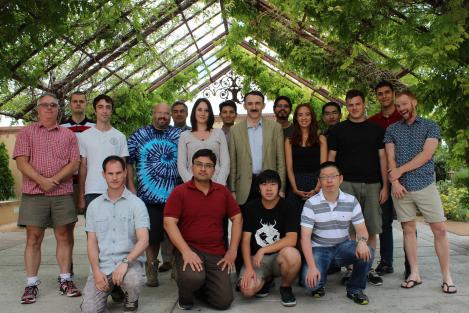Accelerator science has demonstrated a rich history of inventions, often inspired by Nature itself. The history of accelerator science, expressed in the form of the so-called Livingston plot which shows energy reached versus time, describes this history via a sequence of ascending steps corresponding to the birth and saturation of particular technologies of acceleration, followed by the birth of even newer technologies.

In recent years, we started to observe the next oncoming saturation of the Livingston plot, which may indicate the approach of the next technological revolution in accelerator science – and this revolution may be propelled by the plasma acceleration methods.
This oncoming technological revolution in accelerator science requires novel approaches for educating the next generation of scientists. Fluency in all three areas of the physics of accelerators, lasers and plasma is now a must. Moreover, creation of practical applications of the new technologies demands better knowledge of the needs and methods of industry.
The new training courses being developed at JAI aim to create bridges between these three scientific disciplines and industry. With a pilot course delivered this spring to Oxford undergraduates, and more recently a full week course offered to USPAS students in June 2014, we are now armed with an integrated course that creates bridges and connections between these three areas of physics essential for developing the next generation of accelerators and connecting all with the industrial art of TRIZ: the theory of inventive problem solving.
The theory of inventive problem solving is rarely heard of in the scientific world, but it is an extremely powerful practical methodology widely used in the industrial world. Take, for example, the case study of Samsung, where, according to Forbes, TRIZ became the bedrock of the innovations. Based on the analysis of millions of patents, this theory not only gives us the general laws of evolution of technical systems, but also gives us practical advice as to how to identify pairs of contradicting parameters, how to find an inventive principle that helped to solve this contradiction in the past, and how to apply the generic principle to a particular task.
While TRIZ has been created for industry, its methodology is universal, and can be applied to science, and in particular to Accelerator Science. The USPAS course this June was likely the first time ever when TRIZ was taught together with accelerators, lasers and plasma, and also when an Accelerator Science extension of TRIZ was introduced and continued to be developed by enthusiastic USPAS students.
This approach is being developed further in JAI and will be suitable and helpful to anyone interested in enhancing their ability to work successfully on developing the next generation of facilities, devices, and scientific instruments, all arising from the synergy of these three scientific areas and armed with a methodology for inventiveness and efficient problem solving, motivated and able to develop practical applications of the new technologies for industry and society.
Pictured: USPAS class of June 2014, Course “Unifying Physics of Accelerators, Lasers and Plasma”. Photo (link to the original) - courtesy of USPAS team.